OUR CHIROPRACTORS AT CHIROPRACTIC PARTNERS
PROVIDE PAIN RELIEF FOR BACK & NECK PAIN, HEADACHES, SCIATICA, INJURIES AND MORE!
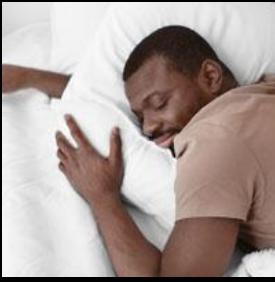
- posted: Dec. 20, 2019
Chiropractic Partners of North Raleigh has some interesting facts about sleep to share with you! Let our team of chiropractors help restore your health and wellness today, starting with getting better sleep!
We’re unconscious for roughly 1/3rd of our lives. Odd, isn’t it? For 33% of our lives we simply lay there, breathing, twitching, and watching out brain make wild fantasies on the back of our eye lids. We’re not exploring the world, making a difference, earning an income, or really anything of value; and yet for most of us sleeping is the BEST part of our day! What a world.
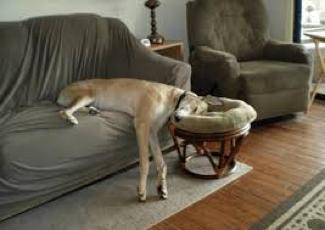
So what’s the point of sleeping? Why do we do it? Before we go through the abbreviated list, let me plug a book called “Why We Sleep” by Dr. Matthew Walker. Dr. Walker is a PhD in neuroscience specializing in sleep. He also has an episode on the very popular “Joe Rogan Experience” podcast. All this to say that if you’d like to learn more, he’s a great place to start!
Sleep is an incredibly complex topic after all it’s neuroscience. There are different phase of sleep, different diseases that can affect sleep, all kinds of factors to consider that would involve a much deeper dive than this article is intended to make. Here’s a quick rundown on what happens during sleep:
- The storage and conversion of short term memories to long term memories, which is crucial for learning.
- Body temperature drops.
- Pulse and blood pressure drop, giving your circulatory system a break.
- Your body releases cytokines and other chemicals to help boost your immune system.
- Your brain cleans itself up by circulating cerebral spinal fluid to flush out normal waste products (which is why sleep deprivation increase risk for Alzheimer’s and other neurocognitive disorders).
- You drop secretion of cortisol (the stress hormone) and increase release of human growth hormone (HGH) to help repair and grow tissues. This is especially important for children and teenagers who require much more sleep than adults due to puberty and growth spurts.
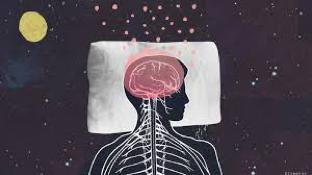
Two extreme examples on the importance of sleep that Dr. Walker gives is in regard to heart health. He reports:
“In the Northern Hemisphere, the switch to daylight savings time in March results in most people losing an hour of sleep opportunity. Should you tabulate millions of daily hospital records, as researchers have done, you discover that this seemingly trivial sleep reduction comes with a frightening spike in heart attacks the following day (>20%). Impressively, it works both ways. In the autumn within the Northern Hemisphere, when the clocks move forward and we gain an hour of sleep opportunity time, rates of heart attacks plummet the day after (again, over 20%). A similar rise-and-fall relationship can be seen with the number of traffic accidents, proving that the brain, by way of attention lapses and microsleeps, is just as sensitive as the heart to very small perturbations of sleep. Most people think nothing of losing an hour of sleep for a single night, believing it to be trivial and inconsequential. It is anything but.”
“Yet something even more profound has happened in this ongoing story of later school start times - something that researchers did not anticipate: the life expectancy of students increased. The leading cause of death among teenagers is road traffic accidents, and in this regard, even the slightest dose of insufficient sleep can have marked consequences, as we have discussed. When the Mahotomedi School District of Minnesota pushed their school start time from 7:30 to 8:00 a.m., there was a 60 percent reduction in traffic accidents in drivers sixteen to eighteen years of age.”
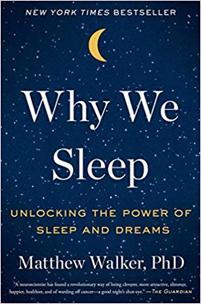
SLEEP HYGIENE
Before we talk about sleep positions and back pain, we can ask how do we even get to sleep to begin with? Millions of American are under-slept, have trouble getting to sleep, and often have to turn to drugs like Ambien and Lunesta to force themselves to sleep.
Blue light- Screens have taken over our lives. Since the rise of the personal computer, video games, and now our inseparable smart phones, our eyes (and in turn brain) are bombarded with blue light. Blue light itself isn’t inherently bad, but too much of it certainly is. Our circadian rhythms are greatly disrupted by having blue light past sundown. Negative effects of this include altering your hormones to keep you ramped up during the evening, blocking melatonin production, and in turn stopping natural drowsiness. Avoiding screens and blue light an hour or so before bed can help fight this off. This might not be possible for everyone, but thankfully you can buy “blue blocking” glasses and lenses that filter out blue light, relieving eye strain and allowing melatonin production.
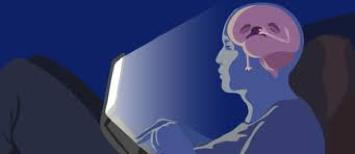
Caffeine Avoidance- Ok, before my coffee connoisseurs get out their torches and pitch forks- hear me out. There are many benefits to coffee outside of just the alertness from caffeine; it’s a diuretic and is pretty potent with anti-oxidants. Caffeine works by fooling adenosine receptors. As adenosine is created in the brain (more specifically in the space between nerve cells) it binds to adenosine receptors. This binding causes drowsiness by slowing down nerve cell activity. These actions are all fine and dandy first thing in the morning while you’re knocking the crust out of your eyes, but it’s important to understand timing and how long caffeine stands in your system. The half-life (time it takes for the amount of something in your system to be cut in half) for caffeine is between 3-5 hours. Meaning that if you drink 2 cups of coffee (about 100mgs for caffeine) at 8 AM, you can have up to 50mgs in your system at 1 PM. Again, this is great in the morning, but if you decide to have those two cups at 4 PM that’s roughly the equivalent of one cup at 9 PM. You wouldn’t drink a cup of coffee and then try to sleep an hour later, would you? Ok hipster guy with the funny mustache and tight pants, you might. But us normal people have things to do.
Temperature- There are two key practices with temperature control to help you sleep better. The first, and most obvious, is to keep your bedroom on the cooler side. Most people find that they sleep best when the room temperature is between 65-70 degrees Fahrenheit. The cool room helps promote the drowsiness that comes with a slightly lowered body temperature, and allows you to get all snuggly under the blankets without breathing hot and stuffy air. The other trick you can do is to take a nice hot shower before bed. Not only is that a relaxing thing to do at the end of a long day, but once you’re out of the shower the cooling effect of water molecules evaporating off your skin is a great way to lower your body temperature.
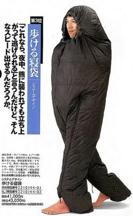
Supplementation- There a few really solid supplements for having better sleep. Melatonin is a popular one, it’s actually the same hormone your body releases to make you drowsy. However, using to much exogenous melatonin for too long can throw off you body’s ability to properly produce and regulate it, making you dependent on that melatonin supplement. We recommend you use it sparingly, only when you absolutely need to. Magnesium or ZMA are also very popular sleep aids. Their relaxing effects are well established. Lastly, valerian root is the most common herbal sleep aid that’s popular, but the research on it is pretty wishy washy. Recently, the most popular thing to do before bed is to take a dose of CBD. As with a recent blog post on CBD, studies have shown that CBD is quite good at calming people down, relieving anxiety, and at overall promoting a good state for sleep.
SLEEPING POSITION
Whether you’re a side sleeper, back sleeper, or hang from the ceiling like a bat, there are ways to modify your sleeping position to avoiding feeling as sore and stiff in the morning.
Back Sleepers- Sleeping on your back is, in my opinion, is the best sleeping position. However, this is assuming it’s done optimally. Many people will make the mistake of sleeping with a pillow, especially a large one, underneath their head as they sleep on their back. This is troublesome because back sleeping with your head on a pillow is the EXACT same posture of standing up, but with your head position significantly forward. It’s like sleeping with text neck! We recommend that if you’re a back sleeper to either sleep without a pillow, or with the thinnest one you can. It might take a while, but it’s worth it! Here’s an example of a pillow that’s too thick:
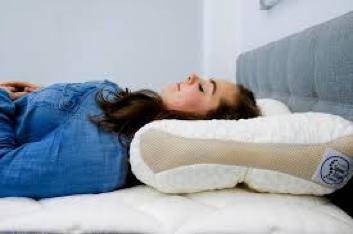
Side Sleepers- Side sleeping can be quite comfortable, except for those few that go “full fetal position” and resemble a scared armadillo more than a human. Side sleeping can often lead to neck, shoulder, and low back soreness when not done properly. Let’s start from the top down. If you’re going to sleep on your side it’s important to have a pillow high enough so that your neck is in a neutral position so that your head isn’t dangling towards the mattress. This is also so that you can pull your shoulder back so your arm is underneath you. Letting your arm slide too far out from directly under you puts the shoulder in an awkward position, under the weight of your torso. For your lower back, try putting a pillow between your legs so your knees don’t touch. You wouldn’t stand or sit with your hips rotated and knees touching for 8 hours, so why sleep that way?
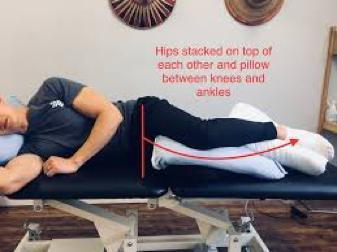
Stomach Sleepers- Please don’t do this. Stomach sleeping is definitely the worst of the positions. Sleeping with your head turned to one side all night is a great way to irritate the small facet joints in your neck, which is a notorious cause of torticollis or “a kink” in your neck. To begin to transition from a stomach sleeping to a side sleeping transition it could very helpful to get a body pillow. This allows a position that’s just beginning to rotate you away from flat on the bed, to about 15-20 degrees of rotation on your side. That’s a good halfway point, and as that position gets more comfortable the side sleeping position will soon become more natural.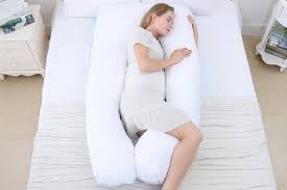
Mattress Firmness- If there’s a “Big Pharma”, there’s definitely “Big Mattress”. The mattress business is fraught with gimmicks and overcomplications in the attempt to make a sale. You can spend more money on a mattress than a car if you really wanted to. So how do you choose? Honestly, a lot of it is preference. Some people prefer firmer mattresses, some softer. As a chiropractor, my viewpoint is what is going to put you spine and joints in the best position, and this ultimately boils down to pressure points. Let’s use a side sleeper as an example. If a mattress is too firm, the pressure points of the shoulder and hip aren’t absorbed by the mattress, forcing your spine to bend awkwardly. On the flip side, if the mattress is too soft then you can also bend too much in compensation. This is where preference comes in, because you can’t really win.
Speaking for myself, trying to find a win-win is what lead me to the Purple Mattress brand. The uniqueness of the mattress comes from its polymer-foam grid system. Essentially meaning that it absorbs pressure spots in a way that contours extremely tightly to your body, while still giving plenty of give in those crucial pressure points. I own one of its original models and I was blown away. As a side sleeper I was constantly having shoulder and neck pain from my mattress and pillow combination, but just changing the mattress helped the pressure on my shoulders tremendously. I can’t recommend it enough, and no I’m not getting a dime for advertising. Their advertisements are ridiculously funny, though.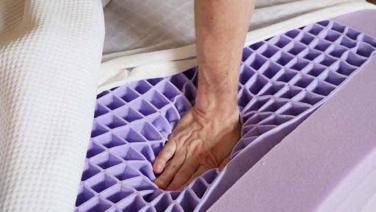
The more you know about sleep, the more you realize just how important it is to add years to your life and life to your years. All the doctors here at Chiropractic Partners are happy to take any specific questions you may have about sleep, as well as selling cervical pillows, lumbar or knee supports for any sleep modifications you may need!

